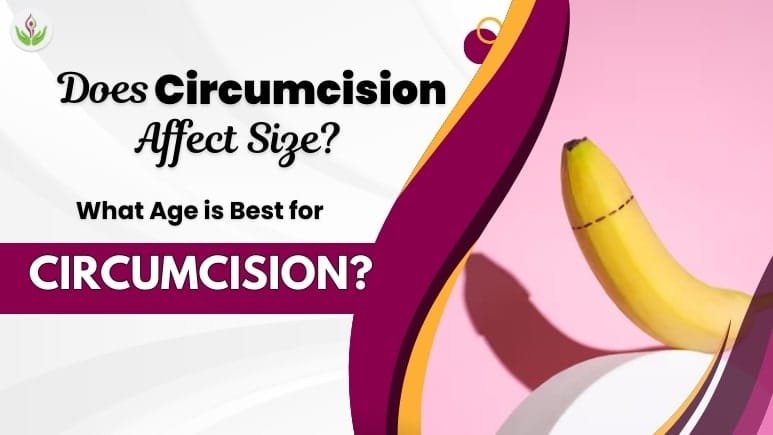Introduction
Circumcision, the surgical removal of the foreskin covering the head of the penis, is a practice with deep historical, cultural, and religious roots. Its relevance spans centuries and continents, with varied reasons for its practice ranging from religious obligations to medical recommendations. This article delves into the common questions surrounding circumcision: Does circumcision affect size? What age is best for circumcision? By examining the impacts of circumcision on penile size and the optimal age for the procedure, we aim to provide a comprehensive understanding of this significant topic.
The History of Circumcision
Ancient Practices
Circumcision has been practiced for thousands of years, with evidence tracing back to ancient Egypt. The procedure was often a rite of passage into adulthood or a mark of religious devotion.
Religious and Cultural Significance
In Judaism and Islam, circumcision holds profound religious significance. Jewish circumcisions are typically performed on the eighth day after birth, while in Islam, the age can vary but often occurs in early childhood.
Modern Medical Adoption
In the late 19th and early 20th centuries, circumcision gained medical popularity in Western cultures, primarily in the United States, for perceived health benefits.
The Procedure of Circumcision

Neonatal Circumcision
Performed on newborns, neonatal circumcision is a quick procedure with a relatively fast recovery time. It’s commonly done in hospital settings shortly after birth.
Pediatric Circumcision
Circumcision in older children requires general anesthesia and has a longer recovery period compared to neonatal circumcision.
Adult Circumcision
Adult circumcision is less common and involves a more complex surgical procedure, with a significant recovery period and potential complications.
Does Circumcision Affect Size?
A frequent concern regarding circumcision is whether it influences the size of the penis. To address this, it is essential to distinguish between the actual physical size of the penis and its perceived size.
Physical Size: Circumcision does not impact the physical size of the penis. The procedure involves removing the foreskin, which is a fold of skin that covers the glans (head) of the penis. This removal does not alter the length or girth of the penile shaft itself. Therefore, the size of the penis remains unchanged from a medical perspective.
Perceived Size: The perception of size might be slightly different. Some people believe that a circumcised penis looks smaller due to the absence of the foreskin. However, this is merely an optical illusion. Conversely, others think a circumcised penis looks larger because the glans is exposed. Again, this is a matter of visual perception rather than actual size.
Common Myths and Misconceptions
A prevalent myth is that circumcision reduces penile size. This misconception likely arises from the visual change post-procedure. Scientifically, circumcision does not impact the actual size of the penis.
What Age is Best for Circumcision?
Neonatal Circumcision
Circumcising newborns is often preferred due to the simplicity of the procedure and quicker healing process. Newborns typically experience less pain and have a lower risk of complications.
Pediatric Circumcision
Circumcising at a slightly older age, such as in infancy or early childhood, is also common in many cultures and religions. The procedure is safe but requires more care during recovery.
Adult Circumcision
Adult circumcision is generally reserved for medical reasons, such as phimosis or recurrent infections. The procedure is more complex, with longer recovery times and higher risks of complications.
Benefits of Circumcision

Health Benefits
Circumcision can reduce the risk of urinary tract infections, penile cancer, and sexually transmitted infections. It also simplifies hygiene by making the penis easier to clean.
Cultural and Religious Benefits
For many, the cultural and religious significance of circumcision outweighs medical considerations. It functions as a crucial milestone or a spiritual duty.
Personal and Social Benefits
Some choose circumcision for personal or aesthetic reasons, influenced by social norms or perceived preferences.
Risks and Complications of Circumcision
Immediate Risks
Immediate risks include bleeding, infection, and pain. Proper medical care and hygiene can mitigate these risks.
Long-term Risks
Long-term complications are rare but can include scarring, sensitivity changes, and, in very rare cases, improper healing.
Psychological Impact
The psychological impact of circumcision can vary. Some men report satisfaction with their circumcised state, while others may experience regret or dissatisfaction, particularly if circumcised later in life without their consent.
Expert Opinions on Circumcision
Medical Professionals
Most medical professionals agree that circumcision has both benefits and risks. The American Academy of Pediatrics states that the health benefits of newborn circumcision outweigh the risks but does not recommend it universally.
Cultural and Religious Leaders
Religious leaders often advocate for circumcision within their communities, emphasizing its spiritual and cultural importance.
Social Scientists
Social scientists examine the practice from a cultural and societal perspective, noting the significant role it plays in identity and tradition.
Conclusion
Circumcision does not affect the physical size of the penis, although perceptions may vary. The best age for circumcision depends on various factors, including medical, cultural, and personal considerations. Newborn circumcision is common due to quicker healing and fewer complications, but circumcision can be performed at any age with appropriate medical guidance.
Ultimately, the decision to circumcise and the timing of the procedure should be made after careful consideration of all factors involved. Consulting with a healthcare provider can provide additional insights and help make an informed decision that aligns with the individual’s or family’s preferences and values.
FAQs
No, circumcision does not impact the physical size of the penis. The procedure only removes the foreskin and does not alter the length or girth of the penile shaft.
Some people believe a circumcised penis looks smaller due to the absence of the foreskin, but this is an optical illusion. The actual size remains the same.
The best age varies: newborns and infants heal faster, while older children and adults can make informed decisions. Medical advice and personal preferences should guide the timing.
Newborns may experience discomfort, but it is typically brief. Pain management options are available to minimize discomfort during and after the procedure.
Yes, circumcision can reduce the risk of urinary tract infections, certain sexually transmitted infections, phimosis, and penile cancer.
Risks include bleeding, infection, and adverse reactions to anesthesia. These risks are generally low but should be considered when making a decision.
Yes, adults can be circumcised. The procedure may involve more pain and a longer recovery period compared to infants, but it is safe when performed by a qualified healthcare provider.
Healing times vary: newborns typically heal within a week, while older children and adults may take longer, ranging from two to four weeks.
Yes, anesthesia is used to minimize pain. Newborns often receive local anesthesia, while older children and adults may require general anesthesia or a combination of local anesthesia and sedation.
Studies suggest that circumcision does not significantly affect sexual pleasure. Sensitivity changes are subjective and vary among individuals.
References:
- Xi RC, Sheng YR, Chen WH, Sheng L, Gang JJ, Tong Z, et al. Male circumcision performed with 8-figure non-absorbable suture technique. Can Urol Assoc J. 2014;8(3-4):E142–7. doi: 10.5489/cuaj.1521. [PMC free article] [PubMed] [CrossRef] [Google Scholar]
- American Academy of Pediatrics Task Force on Circumcision Circumcision policy statement. Pediatrics. 2012;130:e756–85. [PubMed] [Google Scholar]














